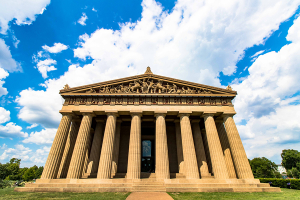LIFE & CULTURE
XpatAthens
A Christmas Carol / Charles Dickens
Events dates and times:
Wednesday to Saturday 8.30pm
Sunday 7pm
*With English surtitles
Yorgos Lanthimos's Film 'The Favourite' Receives The Most BAFTA Nominations
Perivolas Hotel In Santorini Among The Best In The World
‘There are plenty of hotels on Santorini with giddying views—the most desirable places to stay teeter on the rim of a 300-meter cliff that plunges into the flooded volcanic caldera. But none have the spare, ethereal bone structure of Perivolas. Rooms are sculpted from brushed concrete, pressed into arched doorways and barreled ceilings with the builders’ bare hands. Bright hits of pink and purple—a sprig of bougainvillea, a heap of floor cushions—bring the cool white interiors and black volcanic walls into sharper focus. This fierce purity defines every detail at Perivolas, a family dream that materialized in the early 1980s and is still run with great passion and precision by the Psychas clan. The line-up here is scant but special: a hushed restaurant beside a pool almost indistinguishable from the blue horizon, where the chef cures, smokes, and ferments local ingredients into artful yet unfussy dishes; and a small, soulful spa streaming with natural light. It takes confidence to leave so much out of a five-star hotel, but Perivolas defines luxury differently than most hotels on the island—or anywhere else for that matter. One of the things that draws devotees back season after season is the fact that time seems to stand still here. Sure, discreet additions might appear, such as the purpose-built gym, lap pool, and yoga studio last year. But while the rest of Santorini is engaged in an unseemly scrum for more tourist dollars, life at Perivolas remains blissfully unhurried, unflashy and yes, unspoiled.’
To read the Gold List in full, please visit: Condé Nast Traveler
Photo Credit: Perivolas Hotel
Odd But True: Tennessee Has Its Own Full Scale Replica Of the Parthenon
The National Library of Greece Opens Its Doors In Its New Premises At SNFCC
FokiaNou Art Space - Athens Under The Microscope
The participating artists are: Lilia Agathou, Sebastian Boulter, Mary Cox, Susan Daboll, Vasilis Galanis, Alexandros Garnavos, Athina Kanellopoulou, Katerina Katsifaraki, Georgia Kyriakidou, Ilia Machaira, Dimitra Maltabe, Katerina Moniaki, Poppy Panopoulou, Alegia Papageorgiou, Eleftheria Rapanaki, Fiona Spathopoulou, Evi Stamou, Iliana Theodoropoulou and Kiveli Zachariou.
Opening: Wednesday, 16 January 2019, 18.00
Duration: 16 January – 2 February 2019. Opening hours: Thursday to Saturday 17.00 - 20.00.
Artist Talk: Saturday, 26 January, 18.30
The Witches Of Smyrna - Pallas Theater
For children over 15
With English subtitles
Street Soccer 5x5 - SNFCC
Design-Implementation: Regeneration & Progress
When: Saturday 12, 19, 26/01 & Sunday 13, 20, 27/01
Time: 10.00 - 13.00
OUTDOOR GAMES AREA
Up to 10 children per 30' session
“Three Sisters” By Anton Chekhov - Onassis Cultural Center
“They sink into a state of inertia, into the fantasy of a ‘life’ in some ‘Moscow’ or other. Trapped within themselves, they lose touch with reality. Beyond the four walls of their home, they fall apart. This confrontation with Outside lies at the heart of the production. And this confrontation is all our stories— our anguished struggle to find our place in a world into which we were thrust, without reason or cause”, the director notes.
Several Schools In Attica Will Remain Closed Due To Heavy Snowfall
Please click here for a detailed list (Greek only) of the schools that will remain closed on January 8 due to the bad weather conditions in the Attica Region.
Source: ANA-MPA











